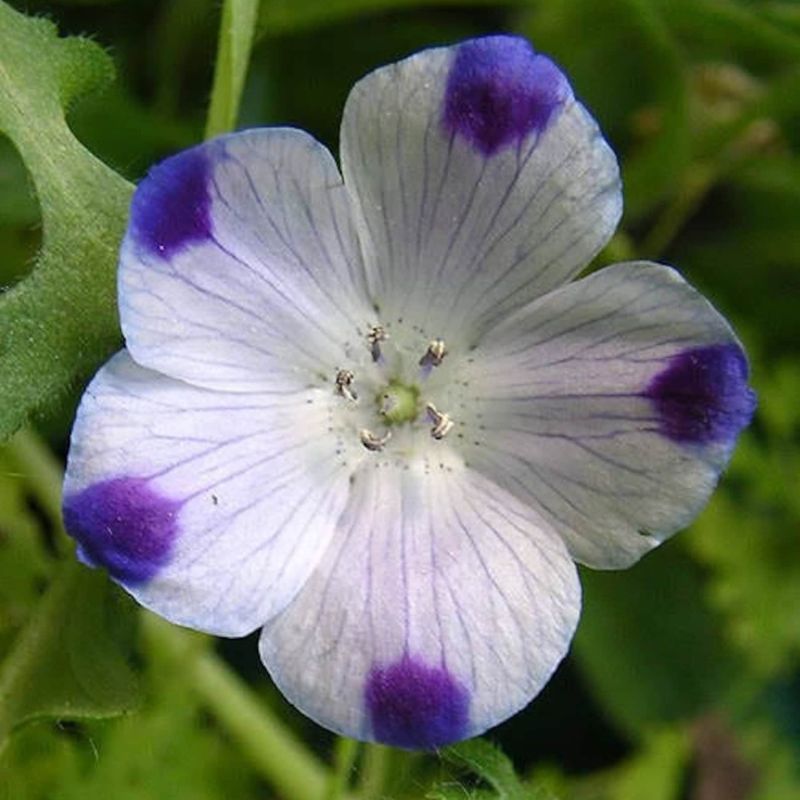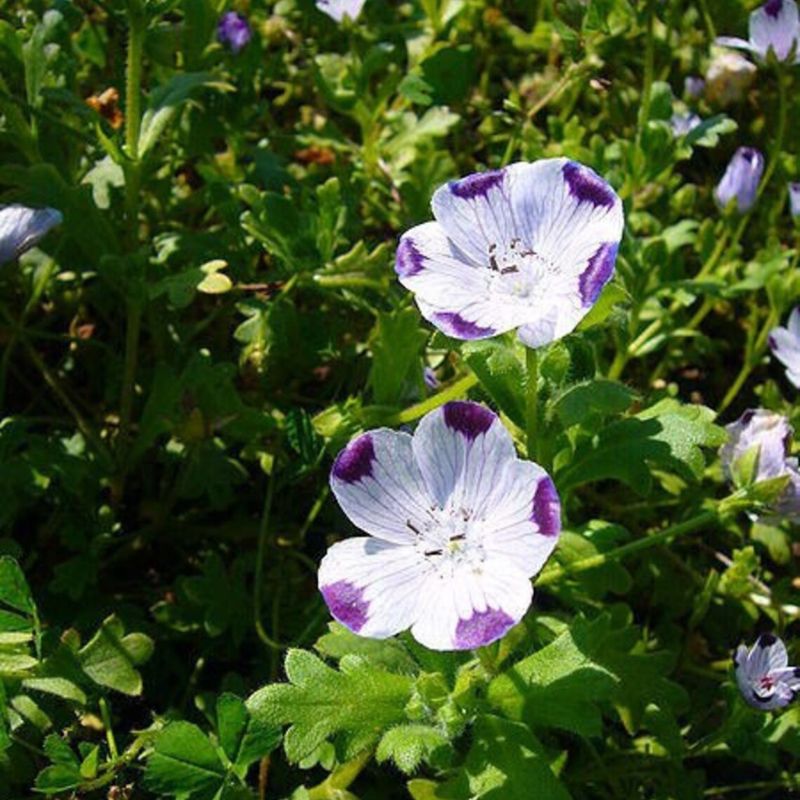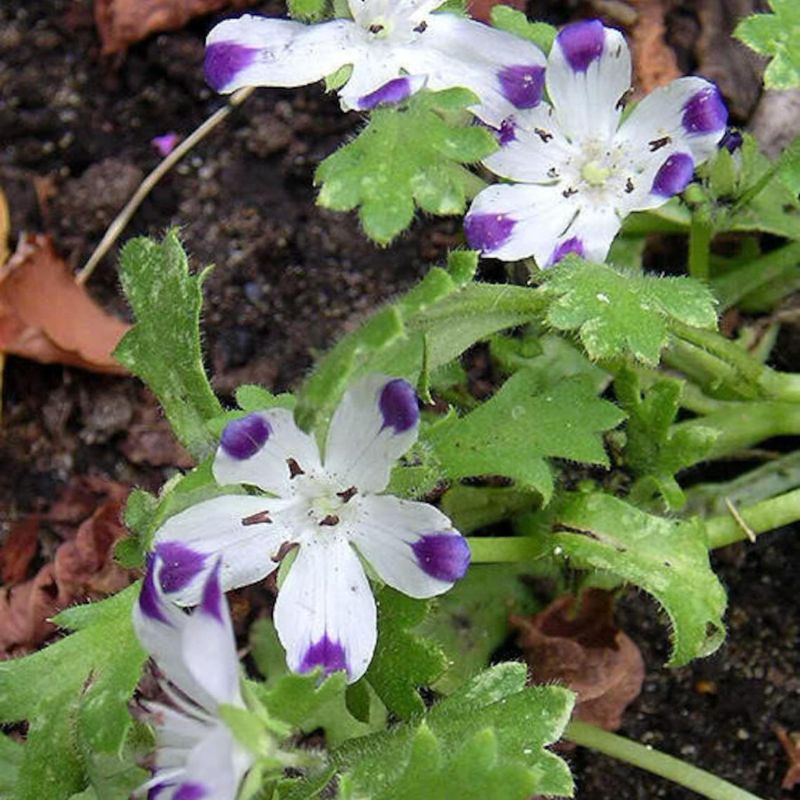- Historical context: The Five Spot Flower, scientifically known as Nemophila maculata, is a charming annual plant native to California. It has been cultivated for its ornamental value since the 19th century.
- Geographical origination: Native to the western United States, particularly California.
- Relevant cultural significance: The Five Spot Flower is often used in wildflower gardens and is appreciated for its unique appearance and ease of growth.
- Time period of discovery: First described in the early 19th century.
- Original habitat: Typically found in open woodlands, grasslands, and coastal scrub areas.
- Notable historical uses: Primarily used for ornamental purposes in gardens and landscapes.
- Ideal temperature range: Prefers temperatures between 60-70°F (15-21°C).
- Soil type: Thrives in well-drained, sandy or loamy soil.
- Sunlight requirements: Full sun to partial shade.
- Watering needs: Moderate watering; keep the soil consistently moist but not waterlogged.
- Planting season: Best planted in early spring after the last frost.
- Germination time: Typically germinates within 7-14 days.
- Growth cycle duration: Annual plant; completes its life cycle in one growing season.
- Common pests and diseases: Generally pest-resistant but can be susceptible to aphids and powdery mildew.
- Companion planting advice: Pairs well with other wildflowers like California poppies and baby blue eyes.
- Common challenges and solutions: Overwatering can lead to root rot. Ensure proper drainage and avoid waterlogged soil.
- Nutritional values: Not applicable as the plant is primarily ornamental.
- Health benefits: No significant medicinal uses are documented.
- Culinary uses: Not used in culinary applications.
- Medicinal uses: No known medicinal uses.
- Other unique advantages: Ornamental Value: The Five Spot Flower is prized for its unique appearance, with each petal featuring a distinct purple spot, making it a favorite in decorative gardens.
Ease of Growth: Suitable for novice gardeners due to its low maintenance requirements.
Pollinator Friendly: Attracts bees and other pollinators, contributing to a healthy garden ecosystem.










